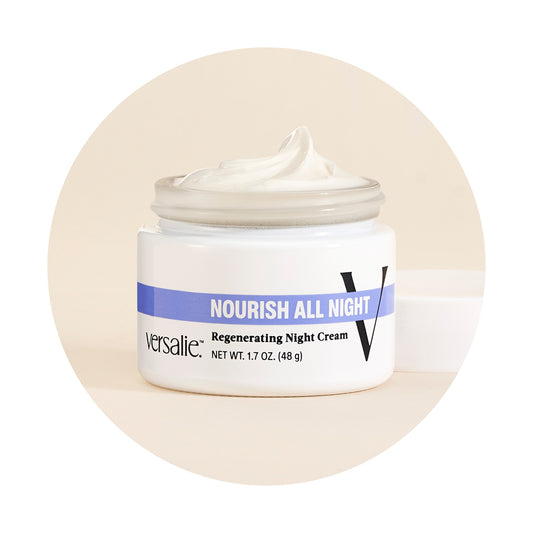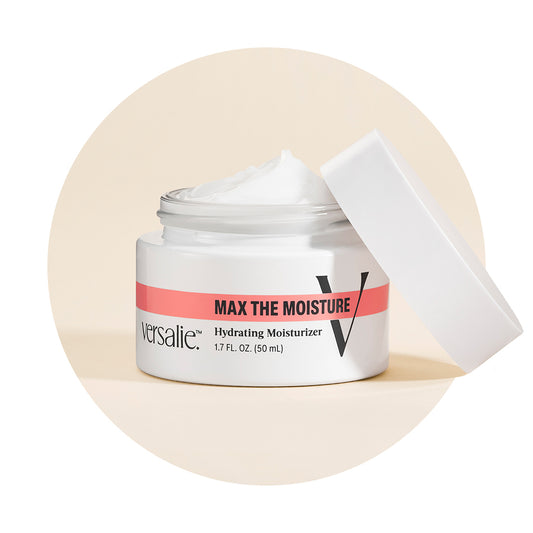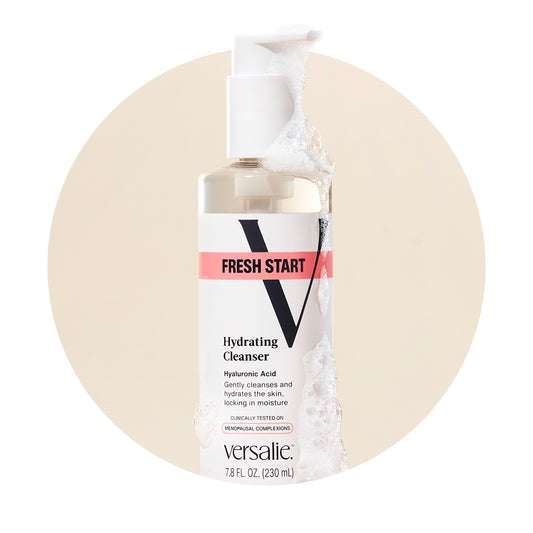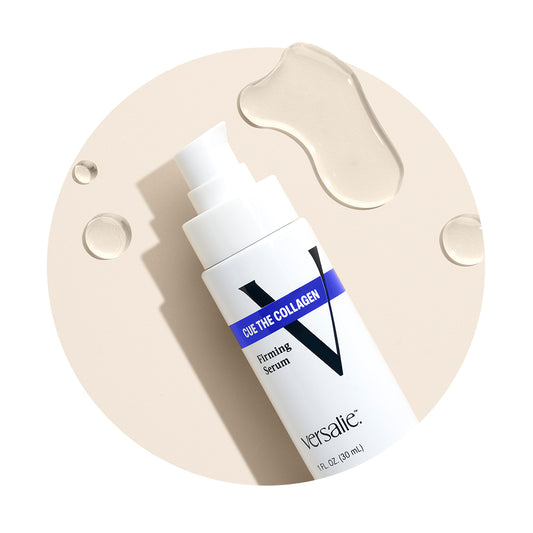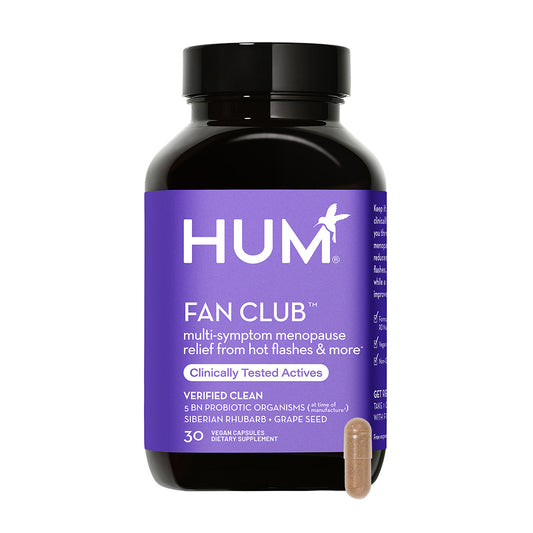In addition to hot flashes and mood swings, menopause can also bring changes in the body, including those related to your bladder. Urinary incontinence, or leaking urine that you can’t control, is not the “sexiest” of topics. But it’s one that needs attention since it can cause uncomfortable and sometimes embarrassing problems.
While urinary incontinence is a common problem before menopause, it can get worse as you age. In fact, half of women over the age of 70 have some form of incontinence. There are many factors that can contribute to bladder leakage. But menopause hormone changes can be one of the most significant factors as we age. It's not the most common menopause symptom, but 12% of females ages 40-65 say they have urinary incontinence.*
What are the different types of urinary incontinence?
Two types of urinary incontinence are most often related to menopause.
- Stress incontinence is the involuntary loss of urine during times when there’s increased stress placed on the bladder. This often happens when you do something as simple as laugh, cough, or sneeze. It can also happen when you’re exercising. Stress incontinence happens when the muscles and tissues that help support the bladder and urethra (your pelvic floor muscles), become weak or undergo too much pressure. This makes it harder to support your bladder function as well as before. You can think of stress incontinence as a structural issue.
- Urge incontinence is urinary leakage that occurs because of a sudden and strong urge to pee. It usually happens because of changes in nerve signals and involuntary overreaction of the muscles that surround and support the bladder muscles. It’s the urge that you (or a friend) have probably experienced when you’re arriving home, keys in the door, and don’t make it to the bathroom on time. You can consider urge incontinence as a functional issue — everything is built correctly but isn’t working the way it should.
- Mixed incontinence. You may have symptoms of both stress and urge incontinence, which is known as mixed urinary incontinence.
Other types of urinary incontinence can include:
- Temporary incontinence is often related to a short-term health problem, such as a urinary tract infection, constipation, or a bladder infection.
- Functional incontinence is when a person's ability to reach the toilet on time is hindered by a physical limitation, communication impairment, or cognitive issue.
What’s an overactive bladder?
Overactive bladder syndrome occurs when the bladder contracts at the wrong time. It can lead to symptoms such as:
- Urinating 8 or more times throughout the day or 2 or more times throughout the night.
- Feeling the sudden, urgent need to urinate.
- Leakage of urine following a sudden, strong urge to pee (urge incontinence).
Why does menopause cause incontinence?
Estrogen has important effects on the urinary system. It supports the health of the bladder, urethra, pelvic floor muscles, and the tissues in the vaginal wall. It also contributes to the normal function of the muscles surrounding the bladder (detrusor) and the urethra.
Estrogen is also important in facilitating healthy blood flow to the tissues of the urinary system. As estrogen levels go down in the later stages of menopause (after your last period), the muscles and tissues that are important for bladder function can become thinner, less flexible, and weaker. This can lead to problems with bladder control.

What can I do to improve my menopause bladder issues?
There are things you can do to strengthen your pelvic muscles and control your bladder.
- Pelvic floor exercises. For muscles that are underused or weak, regular pelvic floor exercises, often called Kegels, can help strengthen the pelvic floor muscles that support the bladder and urethra. A Kegel exercise involves relaxing and tightening the pelvic floor muscles. The pelvic floor muscles, which are located between the tailbone and the pubic bone inside of the pelvis, help control the flow of urine.
- To help identify your pelvic floor muscles, you can try stopping the flow of urine the next time you pee. However, it's not a good idea to regularly practice Kegels by starting and stopping your urinary flow. Performed regularly, these exercises can be particularly beneficial for stress urinary incontinence. A good place to start is 3 sets of 10 Kegels every day.
- Bladder training. The goal of bladder training is to help you regain control. You can do this by increasing the amount your bladder can hold and the time between visits to pass urine. To train your bladder, you need to repeatedly contract pelvic floor muscles (Kegel) at the time of the urge to pee. Hold the contraction for as long as the urge goes away. Practice makes perfect. This change won’t happen overnight, so be patient. And remember, practice makes perfect. These techniques can especially help with urge incontinence.
- Hydrate. While it may seem counterintuitive, staying well hydrated can help reduce bladder irritation. Sip water throughout the day when you feel thirsty. There’s no need to drink excessive amounts.
- Modify your lifestyle. Losing weight or maintaining a healthy weight with a healthy diet and regular exercise can help the pelvic floor muscles and bladder feel less pressure.
- Maintain a healthy diet. Focus on avoiding caffeine, alcohol, spicy foods, and acidic foods as they can irritate your bladder.
- Manage stress. High stress levels can worsen bladder issues. Use relaxation techniques like deep breathing, yoga, and/or meditation to reduce stress.
- Medical interventions. In some cases, medical interventions may be necessary. These can include medicines to help with bladder function, local hormone therapy, and surgeries to fortify support for the bladder and urethra.
- Seeking professional help. People who are experiencing incontinence should never hesitate to seek medical advice. A healthcare provider can work with you to understand the type and severity of your bladder issue. They can also discuss treatment options. Your gynecologist is a good place to start the discussion. They may refer you to a specialist called a urogynecologist or urologist, if you need more invasive testing or procedures.
Education is a key part of managing urinary incontinence. Talking to healthcare providers, friends, and family can help remove the stigma you may feel. It can also promote a safe environment for you to navigate this phase of life and feel more in control…of your bladder.
*Data from Attitudes & Usage study conducted in August 2021 with 4,578 female participants ages 40-65. Funded by Kenvue.
References
Australasian Menopause Society. Urinary incontinence in women [PDF]. Accessed 10/3/23 from https://www.menopause.org.au/images/factsheets/AMS_Urinary_Incontinence_in_Women.pdf
Bodner-Adler, B., Alarab, M., Ruiz-Zapata, A.M., & Latthe, P. (2020). Effectiveness of hormones in postmenopausal pelvic floor dysfunction—International Urogynecological Association research and development—committee opinion. International Urogynecology Journal, 31(8): 1577-1582. doi: 10.1007/s00192-019-04070-0
Continence Foundation of Australia. (2019). How your weight impacts your pelvic floor. Accessed 10/3/23 from https://www.continence.org.au/news/how-your-weight-impacts-your-pelvic-floor
Kolodynska, G., Zalewski, M., & Rozek-Piechura, K. (2019). Urinary incontinence in postmenopausal women – Causes, symptoms, treatment. Menopause Review, 18(1): 46-50. https://doi.org/10.5114/pm.2019.84157
National Association for Continence. The surprising effects of stress on your bladder. Accessed 10/3/23 from https://nafc.org/bhealth-blog/the-surprising-effects-of-stress-on-your-bladder
National Institute of Diabetes and Digestive and Kidney Diseases. (2021). Definition & facts for bladder control problems (urinary incontinence). Accessed 10/8/2024 from https://www.niddk.nih.gov/health-information/urologic-diseases/bladder-control-problems/definition-facts
National Institute of Diabetes and Digestive and Kidney Diseases. (2021). Prevention of bladder control problems (urinary incontinence) & bladder health. Accessed 10/3/23 from https://www.niddk.nih.gov/health-information/urologic-diseases/bladder-control-problems/prevention
National Institute of Diabetes and Digestive and Kidney Diseases. (2021). Symptoms & causes of bladder control problems (urinary incontinence). Accessed 10/3/2024 from https://www.niddk.nih.gov/health-information/urologic-diseases/bladder-control-problems/symptoms-causes
National Library of Medicine, MedlinePlus. (2024). Overactive bladder. Accessed 10/3/2024 from https://medlineplus.gov/overactivebladder.html
National Library of Medicine, MedlinePlus. (2022). Pelvic floor muscle training exercises. Accessed 10/3/23 from https://medlineplus.gov/ency/article/003975.htm
Rahn, D.D., Good, M.W., Roshanravan, S.M., Shi, H., Schaffer, J.I., Singh, R.J., & Word, R.A. (2014). Effects of preoperative local estrogen in postmenopausal women with prolapse: A randomized trial. Journal of Clinical Endocrinology & Metabolism, 99(10): 3728-3736. doi: 10.1210/jc.2014-1216: 10.1210/jc.2014-1216
The Menopause Society. Menopause topics: Symptoms. Accessed 10/30/2024 from https://menopause.org/patient-education/menopause-topics/symptoms
Urology Care Foundation. (2016). Bladder pain advice during IC/BPS awareness month. Accessed 10/3/23 from https://www.urologyhealth.org/healthy-living/care-blog/bladder-pain-advice-during-ic/bps-awareness-month
Urology Care Foundation. What is urinary incontinence? Accessed 10/3/23 from https://www.urologyhealth.org/urology-a-z/u/urinary-incontinence
Urology Care Foundation. Women, keep your pelvic floor healthy. Accessed 10/3/23 from https://www.urologyhealth.org/healthy-living/urologyhealth-extra/magazine-archives/fall-2021/women-keep-your-pelvic-floor-healthy
Weber, M.A., Kleijn, M.H., Langendam, M., Limpens, J., Heineman, M.J., & Roovers, J.P. (2015). Local oestrogen for pelvic floor disorders: A systematic review. PLoS One, 10(9): e0136265. doi: 10.1371/journal.pone.0136265




